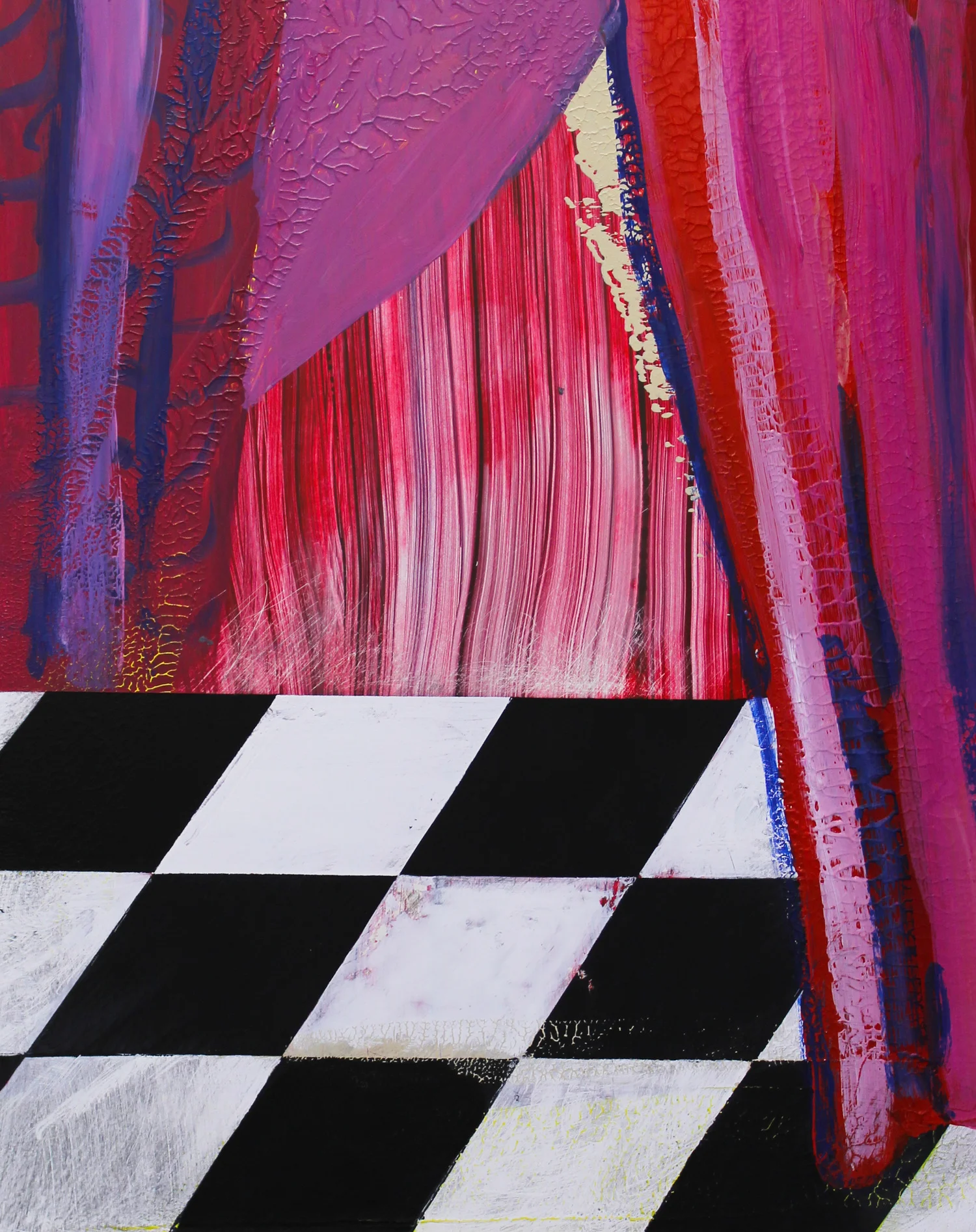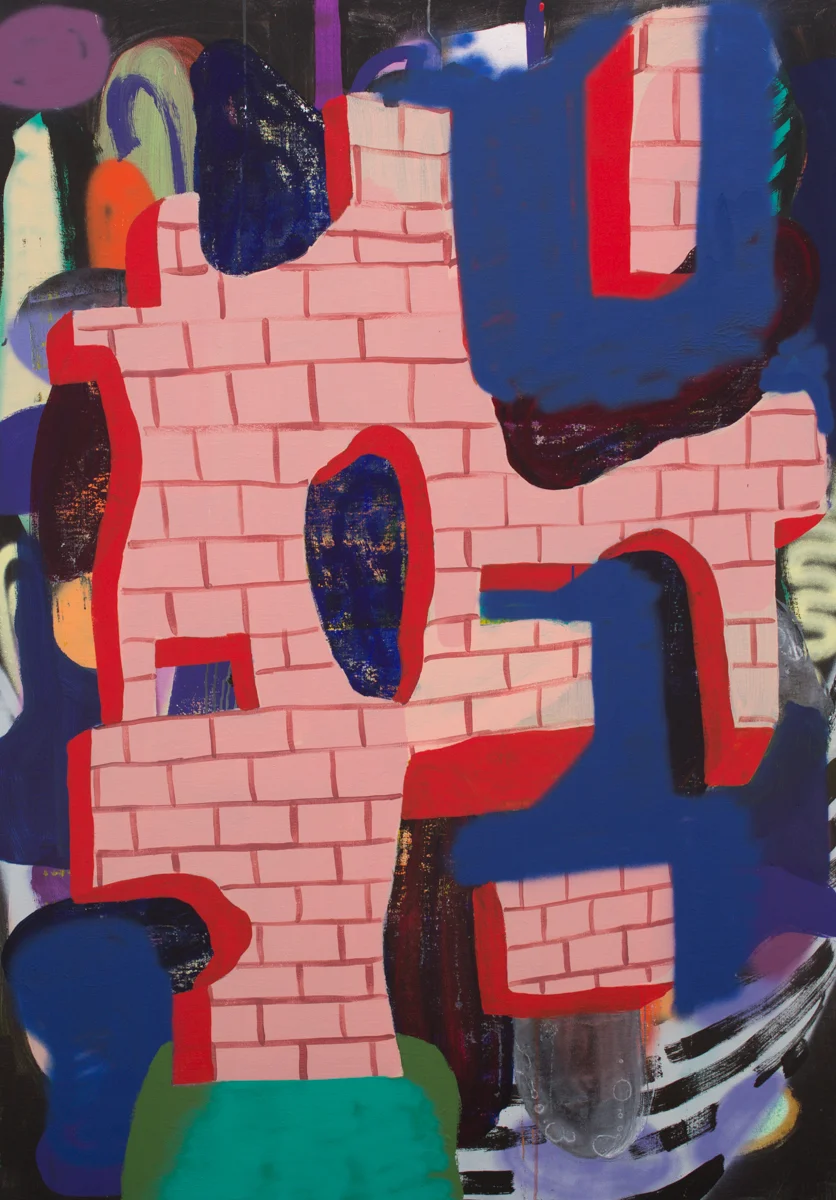Search Party, 2016
Old Moon, 2016
Rock Garden, 2016
Portal, 2014
Parlor, 2014
Observatory, 2016
John Berry at Si Shang Museum
by Tai Yin Ho
The initial hit is a blur of color: a bold palette of hard-edged shapes and weird blobs that bedazzle from all sides. Canvases small and large, wild with vivacious fluorescence and glowing luminosity volumize each piece. Individually, John Berry's paintings present a friendly familiarity with strange, knowable subjects. Viewed all at once, they display a formal logic sophisticatedly rendered through the subconscious.
The experience of viewing each jam-packed frame is unmediated by artifice. Planar relations are grounded in reality: there is, in a canvas, just one. This uniformity is of importance in painting, a medium that has infected the optic 2D prerogative from comic book to postage stamp with the suggestion of false depth. Berry's perspective draws from the tradition of Russian iconography and panel painting where images stood in for writing; figures and their narratives needed to be recognizable to be interpreted. Their settings were otherworldly and faithful to their material origin. Stories were presented on flattened planes, and the usage of light shifted subjects from fore- to background and vice versa.
In Search Party, 2016, we see a number of Berry's favored forms from the built, natural, and human worlds. An ovoid stone stands before a cut-out brick wall, that rests someplace in relation to pink stripey ground. A blue smurf-like foot sheds a couple tears or sweat beads. What they are hardly matters, though. While the descriptive noun may differ, the language of shapes is distinct and clear.
There are the cacti arms of Old Moon, 2016 that see their commonality with and call to the fingerling bendy trunks in Rock Garden, 2016. Checkered black squares alternately form a panel in Portal, 2014, and a planar floor set askew in Parlor, 2014. Berry does not employ a vanishing point in his work. That choice foists the search for perspective back onto the observer-experiencer to decide what is relative to where.
Observatory, 2016 repeats the architectural motif of a puzzle-piece-shaped brick wall. The shape includes a shadow contour — traditionally, an application of a darker color outline to imply depth — as a part of the wall-thing itself. Imagine flattening yourself with your shadow in order to add an egg white appendage around the yolk of self. Another philosophically definitive implication of this representational inclusion: The shadow is not present to merely provide additive visual reality; rather, the wall is inextricable from shadow as shadow is enmeshed with the wall. Seeing that slivered silhouette as a layered part of the shape provides a more exhaustive observation of the object's multitudinous actuality.
What is visualized in a highly articulated and internally logical fashion is a boiled-down, essentialist cross-section of the artist's subconscious. Berry does not plan his canvases before beginning to paint. This particular process contributes to a fluid, dreamworld quality that taps into the familiar: a feat, because as identifiable as the reverie may seem, these scenes aren't something we've seen before; these manifestations aren't our visions. But, as a mix of artist-with the mundus-psyche, they're uncannily intelligible.
Some work require the surrounding space for activation. Like the postage stamp or comic pane, these paintings are a compact universe unto themselves. Video games, an influence of the artist's, share a similar fullness with each framed in-universe panel. These canvases make comprehensive use of being encapsulated. In bringing an imagined experience into reality, an artist recognizes the limitation of form as a necessary reduction of potential into actuality. The vastness of the mind's eye is corralled into a bordered reality. This restriction is not woeful to Berry: by harnessing the subliminal and bidding the viewer to use the syntax of the subconscious, the boomerang's arc swings back into pure possibility. Without a lick of fakery, this is a show of panpsychic reminiscences from the deep.





